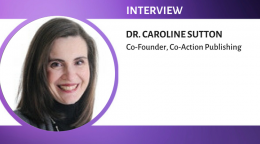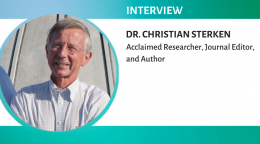"The style of scientific manuscripts published in Chinese and English, in addition to language, is quite different."

Dr. Yi-Wei Tang is currently the Chief of the Clinical Microbiology Service at the Memorial Sloan-Kettering Cancer Center and a Professor of Pathology and Laboratory Medicine at the Weill Medical College of Cornell University in New York City, USA. He obtained his medical training from Fudan University Shanghai School of Medicine, and Ph.D. in microbiology and immunology from Vanderbilt University. He was a Lecturer and Clinical Fellow at the Mayo Clinic and Assistant Professor, Associate Professor to Professor at the Vanderbilt University School of Medicine. He has been engaged in medical and molecular microbiology translational researches, aimed at developing and evaluating new and advanced microbiological diagnostic testing procedures.
Dr. Tang ranks among the top of the scientific field in clinical and molecular microbiology, as evidenced by his election as an Editor for the Journal of Clinical Microbiology, an Associate Editor for the Journal of Molecular Diagnostics, and a Fellow of the American Academy for Microbiology and of the Infectious Disease Society of America. Dr. Tang has been recognized for his extraordinary expertise in the molecular microbiology diagnosis and monitoring with over 200 peer-reviewed articles and book chapters in this field during the past 20 years.
Can you tell us the key aspects of your role as an editor at the Journal of Clinical Microbiology?
I think editors of Journal of Clinical Microbiology play a critical role in generating communication between authors and reviewers. For each manuscript that I am assigned as the processing editor, I first decide if the manuscript merits full evaluation. An editorial rejection may be made in consultation with another editor or a senior editorial board member. For the manuscripts that go for processing, I choose and assign reviewers, and later on, make decisions based on the comments from these reviewers.
In your view, what are some of the biggest challenges medical editors are facing today? Are there any issues unique to Clinical Microbiology?
The authors of Journal of Clinical Microbiology (JCM), in my view, are clinical microbiologists who mainly provide clinical diagnostic services. Therefore, publishing in the journal is mainly for their career development or “hobby” instead of for making a living. The pressure to publish in a journal such as ours should be lower than in other basic science journals, which is true in Western Europe and the US. In other parts of the world, especially China and India, due to some “stimulating” policies, the researchers have become “crazy” to generate high impact factor, SCI publications. In addition to some serious issues like plagiarism and misconduct, JCM editors like me also come across poorly written articles submitted by authors working in fields beyond clinical microbiology.
One of the solutions is to choose a good editing service, which, in addition to language editing, can help the authors find the right journal to include their study findings in.
In light of advancing science on the basis of sound research, what in your opinion are the responsibilities of a JCM editor?
The goal of a JCM editor is to make sure that the research is sound and without fraudulent data. On the other hand, JCM editor is a voluntary position. For example, I myself have another full-time clinical service job in a hospital that I live off. To make sure the above goals are reached, I mainly depend on the 2-3 reviewers of my choice to help me evaluate each manuscript. Fortunately, JCM has a comprehensive reviewer database that includes some of the most excellent and enthusiastic microbiologists.
Can editors be better prepared to spot issues within studies before publication to avoid retractions later? If so, how?
I think it can be accomplished if editors keep their eyes open for potential plagiarism and data mismanagement during the review process. They should remain alert.
As an editor, have you had to tailor your reviews and comments for non-native English authors to make your journal accessible to international authors as well? If so, how?
As a clinical microbiologist trained in both China and the US, I have found that the style of scientific manuscripts published in Chinese and English, in addition to language, is quite different. In a Chinese article, the focus is on the result while the introduction and material sections are relatively short. In contrast, an English manuscript focuses on a hypothesis-driven procedure to make sure the results can be reproduced. It is not uncommon in China that the scientists translate their Chinese manuscript into English and submit it for publication. It is important to keep in mind that the writing style needs to be modified after translation.
I have had to suggest some non-native English authors to have their translation edited by a scientist whose native language is English before resubmission. I would surely suggest a good editing service should the authors ask.
How difficult is it to find reviewers who are suitable for studies in highly specialized areas and willing to review?
It is always very hard to find reviewers who are good and quick. For basic scientists, you don’t want to send them manuscripts to review when they are busy cramming to reach a grant deadline or when they are finally taking time off for a vacation. This is especially true for JCM reviewers. Most of the JCM editorial board members and ad hoc reviewers are doing routine clinical microbiology laboratory service work with limited time for something like reviewing articles. JCM is always on the lookout for energetic clinical microbiologists to join the editorial board.
Is there anything unique about the kind of articles published in JCM?
JCM publishes articles with good science and clinical relevance. As an application-based journal, JCM is interested in clinical application. Therefore, if a novel microbiology technique described in the manuscript has not reached a satisfactory clinical performance, it may fit better for methodology-based journals such as Nature Methods or Journal of Microbiology Methods, instead of JCM.
As an expert of clinical and diagnostic microbiology, what are some topics you have come across at JCM in which you are excited to see progress?
During the past several decades, technical advances in the field of diagnostic microbiology have made constant and enormous progress. The diagnostic capabilities of modern clinical microbiology laboratories have improved rapidly and have expanded greatly. As an editor of JCM, I expect to see more applications of the panomic techniques, including genomics, transcriptomics, proteomics, and metabolomics being widely applied in the clinical microbiology field. Again, please keep in mind the basics (good science and clinical relevance) and remember what was indicated in the Instructions to Authors: “Papers submitted to JCM with whole-genome sequencing or the microbiome as a focus will be considered only when the studies performed are scientifically sound, the observations timely and novel, and the information presented of relevance to the practice of clinical microbiology.”
Thank you Dr. Tang.
This interview was conducted by Alagi Patel.
Related Reading -
The complete guide to writing a brilliant research paper
Published on: Feb 16, 2015
Comments
You're looking to give wings to your academic career and publication journey. We like that!
Why don't we give you complete access! Create a free account and get unlimited access to all resources & a vibrant researcher community.







